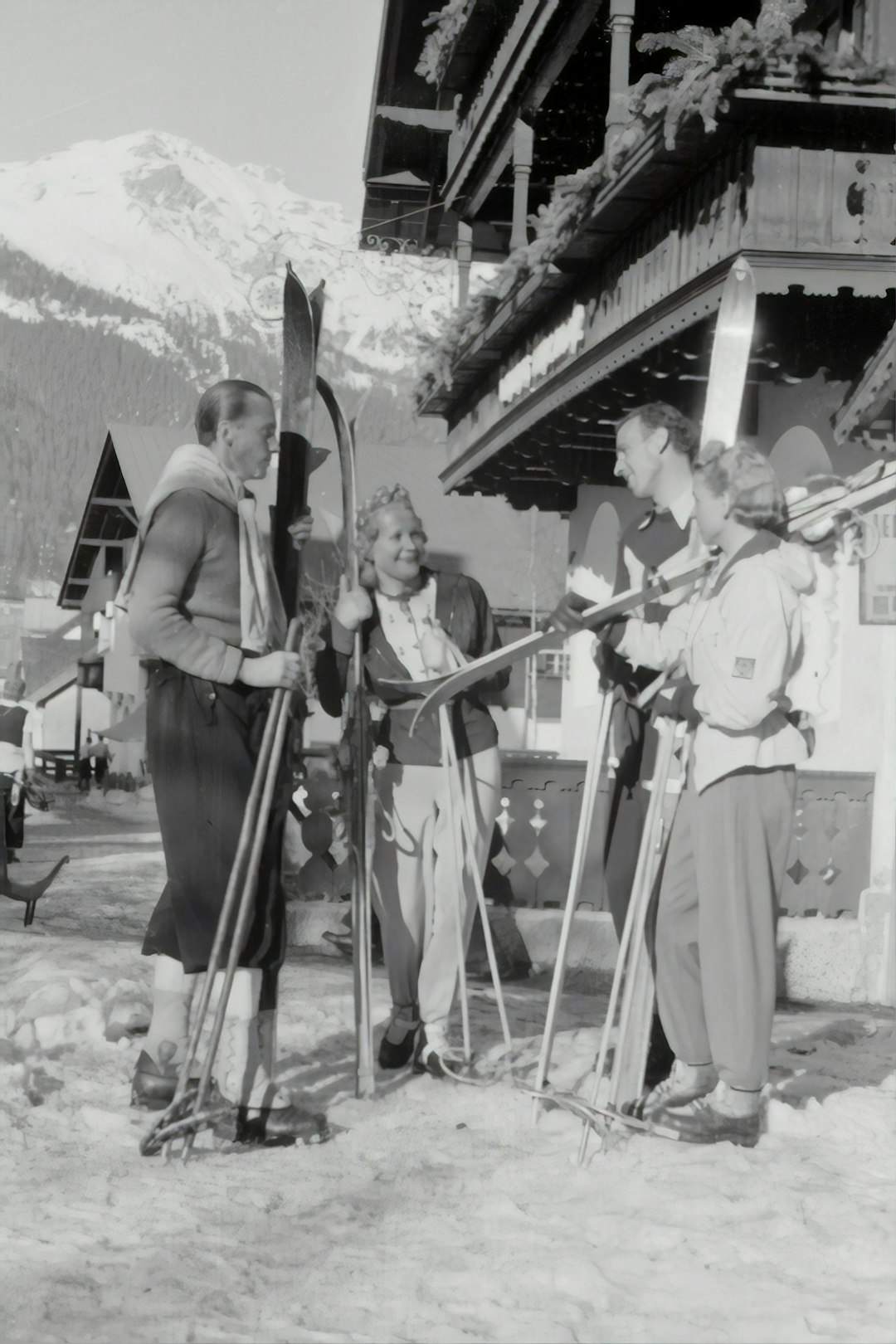Support our educational content for free when you purchase through links on our site. Learn more
¿Qué significa “hola” en el argot español? Descubre 10 Curiosidades que Te Sorprenderán 🤔 [2024]
¿Alguna vez te has preguntado por qué “hola” es más que un simple saludo en español? En este artículo, desglosaremos el significado, las variaciones regionales y las sorprendentes anécdotas que rodean a esta palabra tan común. Desde su evolución histórica hasta su uso en diferentes contextos culturales, “hola” es un reflejo de la calidez y la hospitalidad que caracterizan a los hispanohablantes. ¡Prepárate para conocer 10 curiosidades que te harán ver “hola” con nuevos ojos!
Recuerdo la primera vez que viajé a España. Al llegar, un amable anciano me saludó con un entusiasta “¡Hola!” y, sin darme cuenta, me sentí como en casa. Esa simple palabra rompió el hielo y me abrió la puerta a conversaciones inolvidables. ¿Sabías que “hola” tiene raíces que podrían sorprenderte? ¡Sigue leyendo para descubrirlo!
Key Takeaways
- “Hola” es un saludo universal en el mundo hispanohablante, utilizado en diversas situaciones, desde formales hasta informales.
- Existen variaciones regionales en el uso de “hola”, que reflejan las diferencias culturales en países como México, Argentina y España.
- El argot español ofrece sinónimos y expresiones alternativas como “qué onda” y “qué tal”, que añaden color a las conversaciones.
- La importancia de los saludos en la cultura hispana no solo refleja cortesía, sino también un sentido de comunidad y conexión.
- Usar “hola” correctamente puede mejorar tus habilidades de conversación y ayudarte a establecer relaciones más cercanas con hablantes nativos.
¿Te interesa profundizar en el aprendizaje del español? 👉 Shop Spanish Language Resources on:
Table of Contents
- ¡Hola! Quick Tips and Fun Facts About “Hola” in Spanish Slang
- The Evolution of “Hola”: A Historical Perspective
- Regional Variations: How “Hola” Changes Across Spain and Latin America
- Slang and Synonyms: What Else Can You Say Instead of “Hola”?
- Cultural Significance: Why “Hola” is More Than Just a Greeting
- Fun Anecdotes: Memorable Ways People Use “Hola”
- The Role of “Hola” in Popular Spanish Media
- Common Mistakes: What Not to Say When Greeting in Spanish
- Conclusion
- Recommended Links
- FAQ
- Reference Links
¡Hola! Quick Tips and Fun Facts About “Hola” in Spanish Slang
If you’re learning Spanish, you’ve probably come across the word “hola” (OH-lah) many times. But do you know its origins, variations, and cultural significance? Let’s dive into the world of “hola” and explore its many facets.
What does “hola” mean?
“Hola” is a common informal greeting in Spanish, equivalent to “hello” or “hi” in English. It’s widely used in Spain and Latin America, and its meaning can vary depending on the context and tone of voice.
Where did “hola” come from?
The origin of “hola” is unknown, but it’s believed to be related to the English “hello” and the German “hallo.” Some linguists also link it to the Spanish word “hala,” which means “to shout” or “to call out.”
How to use “hola” in different situations
- Use “hola” as a greeting when meeting someone for the first time or when you haven’t seen them in a while.
- Use “hola, ¿cómo estás?” (OH-lah KOH-moh eh-STAH) to ask how someone is doing.
- Use “hola, ¿qué tal?” (OH-lah KAY TAH) to ask how someone is doing in a more informal way.
Fun facts about “hola”
- “Hola” is a cognate of similar greetings in other languages, such as “hallo” in Afrikaans, German, and Dutch, and “hello” in English.
- The first recorded use of “hola” in Spanish was in 1552.
- In some countries, such as Venezuela and Aruba, “hola” is not commonly used as a greeting.
Related article: Hi in Spanish
The Evolution of “Hola”: A Historical Perspective
As we mentioned earlier, the origin of “hola” is unknown, but it’s believed to be related to the English “hello” and the German “hallo.” Let’s take a closer look at the history of “hola” and how it has evolved over time.
The Middle Ages
During the Middle Ages, the Spanish language was heavily influenced by Arabic and Latin. It’s possible that “hola” was derived from the Arabic word “al-salam,” which means “peace be upon you.”
The Renaissance
During the Renaissance, Spanish became a major language of literature and culture. It’s during this period that “hola” became a common greeting among the nobility and upper classes.
The 19th and 20th centuries
In the 19th and 20th centuries, Spanish became a global language, and “hola” became a widely recognized greeting around the world.
The present day
Today, “hola” is a ubiquitous greeting in Spain and Latin America, and its meaning and usage continue to evolve with the language.
Regional Variations: How “Hola” Changes Across Spain and Latin America
While “hola” is a widely recognized greeting in Spanish, its usage and meaning can vary significantly across different regions and countries. Let’s take a look at some of the regional variations of “hola.”
Spain
In Spain, “hola” is a common greeting, but it’s often used in a more formal way than in Latin America. For example, you might use “hola, ¿cómo estás?” (OH-lah KOH-moh eh-STAH) to ask how someone is doing.
Latin America
In Latin America, “hola” is a more informal greeting, and it’s often used with a more casual tone of voice. For example, you might use “hola, ¿qué onda?” (OH-lah KAY OHN-dah) to ask how someone is doing.
Country-specific variations
- In Mexico, “hola” is often used with a more formal tone of voice, and it’s common to use “buenos días” (BWEH-nohs DEE-ahs) or “buenas tardes” (BWEH-nahs TAR-dehs) as a greeting.
- In Argentina, “hola” is often used with a more casual tone of voice, and it’s common to use “che” (CHAY) as a greeting.
- In Colombia, “hola” is often used with a more formal tone of voice, and it’s common to use “buenos días” (BWEH-nohs DEE-ahs) or “buenas tardes” (BWEH-nahs TAR-dehs) as a greeting.
Slang and Synonyms: What Else Can You Say Instead of “Hola”?
While “hola” is a widely recognized greeting in Spanish, there are many other ways to say hello or greet someone in Spanish. Let’s take a look at some slang and synonyms for “hola.”
Slang greetings
- “Qué onda?” (KAY OHN-dah) – a casual greeting that means “what’s up?”
- “Qué tal?” (KAY TAH) – a casual greeting that means “how are you?”
- “Hola, ¿cómo estás?” (OH-lah KOH-moh eh-STAH) – a more formal greeting that means “hello, how are you?”
Synonyms for “hola”
- “Buenos días” (BWEH-nohs DEE-ahs) – a formal greeting that means “good morning”
- “Buenas tardes” (BWEH-nahs TAR-dehs) – a formal greeting that means “good afternoon”
- “Buenas noches” (BWEH-nahs NOH-chehs) – a formal greeting that means “good evening”
Cultural Significance: Why “Hola” is More Than Just a Greeting
While “hola” is a widely recognized greeting in Spanish, it’s also a cultural phenomenon that reflects the values and customs of Spanish-speaking countries. Let’s take a look at the cultural significance of “hola.”
The importance of greetings in Spanish culture
In Spanish culture, greetings are an important part of social etiquette. When you greet someone in Spanish, you’re not just saying hello – you’re also showing respect and courtesy.
The use of “hola” in everyday life
“Hola” is a ubiquitous greeting in Spanish-speaking countries, and it’s used in a variety of contexts – from formal business meetings to casual conversations with friends.
The cultural significance of “hola”
“Hola” is more than just a greeting – it’s a cultural phenomenon that reflects the values and customs of Spanish-speaking countries. It’s a way of showing respect, courtesy, and hospitality to others.
Fun Anecdotes: Memorable Ways People Use “Hola”
While “hola” is a widely recognized greeting in Spanish, it’s also a versatile word that can be used in a variety of ways. Let’s take a look at some fun anecdotes about “hola.”
The “hola” of the Spanish royal family
In Spain, the royal family uses “hola” as a formal greeting, but they also use it in a more informal way when they’re speaking with friends and family.
The “hola” of the Latin American streets
In Latin America, “hola” is often used as a casual greeting on the streets, but it’s also used in a more formal way in business meetings and formal events.
The “hola” of the Spanish language learners
For Spanish language learners, “hola” is often the first word they learn, and it’s a way of breaking the ice with native speakers.
The Role of “Hola” in Popular Spanish Media
While “hola” is a widely recognized greeting in Spanish, it’s also a popular word in Spanish media – from movies and TV shows to music and literature. Let’s take a look at the role of “hola” in popular Spanish media.
Movies and TV shows
In Spanish movies and TV shows, “hola” is often used as a greeting, but it’s also used in a more dramatic way to convey emotions and reactions.
Music
In Spanish music, “hola” is often used as a refrain or a chorus, and it’s a way of expressing emotions and feelings.
Literature
In Spanish literature, “hola” is often used as a greeting, but it’s also used in a more poetic way to convey emotions and feelings.
Common Mistakes: What Not to Say When Greeting in Spanish
While “hola” is a widely recognized greeting in Spanish, there are some common mistakes that non-native speakers make when greeting in Spanish. Let’s take a look at some of these mistakes.
Using “hola” in formal situations
While “hola” is a common greeting in Spanish, it’s not always suitable for formal situations. In formal situations, it’s better to use “buenos días” (BWEH-nohs DEE-ahs) or “buenas tardes” (BWEH-nahs TAR-dehs).
Using “hola” with the wrong tone of voice
The tone of voice is important when greeting in Spanish, and using “hola” with the wrong tone of voice can be confusing or even rude.
Not using “hola” at all
Not using “hola” at all can be seen as impolite or rude in Spanish culture, especially in formal situations.
Conclusion

In conclusion, “hola” is more than just a simple greeting; it embodies the warmth and hospitality of Spanish-speaking cultures. From its uncertain origins to its widespread use across various regions, “hola” has evolved into a versatile term that reflects both formality and informality, depending on the context.
Positives:
- Widely Recognized: “Hola” is understood in nearly every Spanish-speaking country, making it a universal greeting.
- Cultural Relevance: Using “hola” appropriately can enhance your understanding of Spanish culture and social etiquette.
- Versatile Usage: It can be used in various contexts, from casual encounters to more formal situations, with slight adjustments.
Negatives:
- Context Sensitivity: Misusing “hola” in formal situations can come off as disrespectful.
- Regional Variations: The casual tone of “hola” may not be suitable in all Spanish-speaking regions, leading to misunderstandings.
Overall, we confidently recommend incorporating “hola” into your Spanish vocabulary. It’s a simple yet powerful word that opens doors to conversations and connections in the Spanish-speaking world! 🌍✨
Recommended Links
- 👉 Shop Spanish Language Books on Amazon:
FAQ

¿Qué significa cuando alguien dice hola?
Cuando alguien dice “hola,” está realizando un saludo informal. Es una manera de reconocer la presencia de otra persona y abrir la puerta a una conversación. Puede ser usado en cualquier momento del día y en diversas situaciones, desde encuentros casuales hasta interacciones más formales, aunque el contexto puede afectar su idoneidad.
¿Qué quiere decir hola en castellano?
En castellano, “hola” es un saludo que se utiliza para iniciar una conversación. Es un término amigable y accesible, que refleja la cordialidad del hablante. Además, “hola” puede tener matices adicionales dependiendo del tono y la expresión facial del hablante.
¿Dónde se utiliza el argot?
El argot se utiliza en contextos informales y coloquiales, a menudo entre grupos de amigos o en situaciones sociales. En el caso de “hola,” sus variantes como “qué onda” o “qué tal” son ejemplos de argot que pueden variar de una región a otra, reflejando la diversidad cultural del mundo hispanohablante.
¿Cómo dicen los españoles cuando algo les gusta?
Los españoles suelen utilizar expresiones como “me mola” o “está guay” cuando algo les gusta. Estas expresiones son informales y se utilizan comúnmente entre amigos y familiares. Por ejemplo, “Esta película me mola” significa “I really like this movie.”

